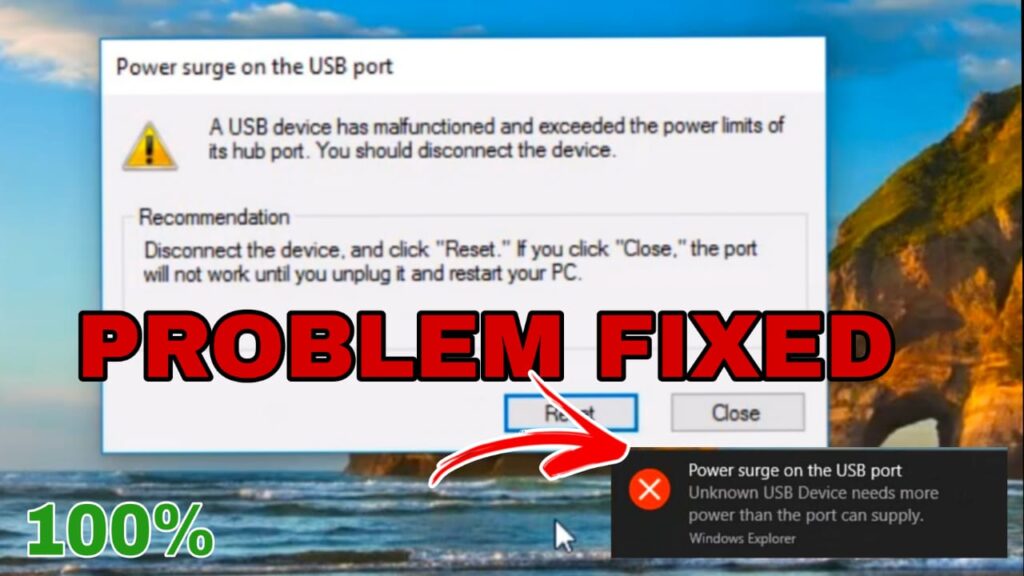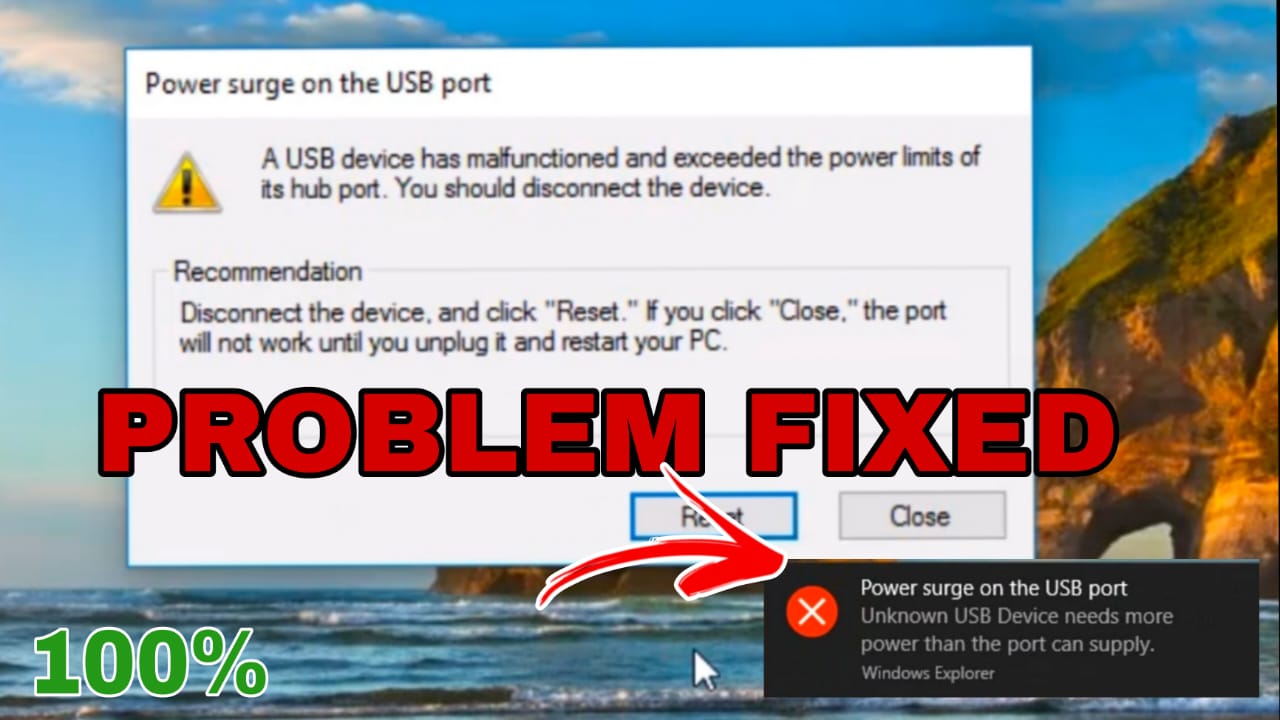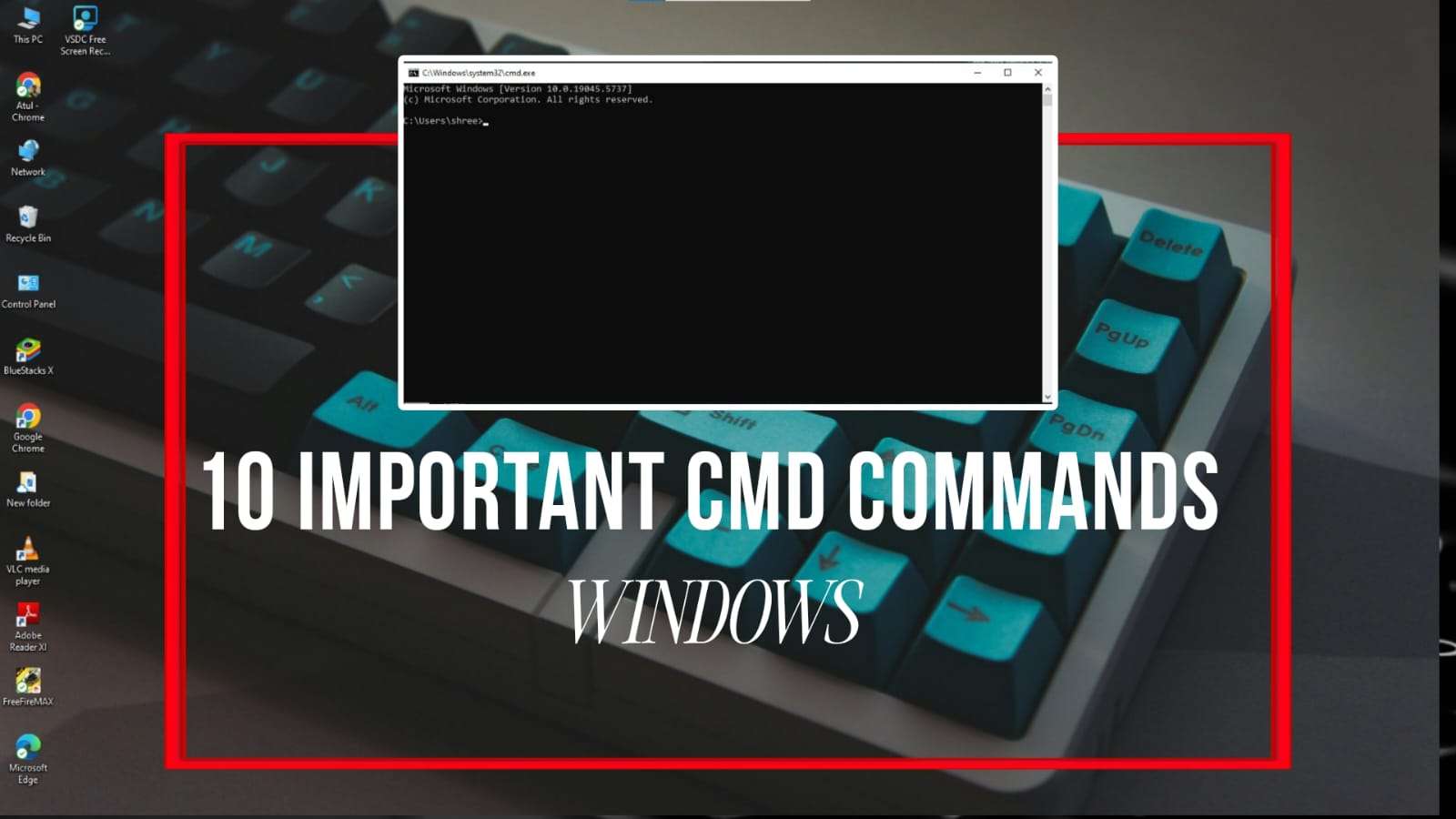Many times it happens that in our system, power surge on USB port error starts appearing on the home page of the window. We remove this problem but it starts recurring again. This problem can occur in your laptop due to many reasons. So today we will solve it. For the solution, you will have to follow all the steps.

Follow these tips to fix power surge problem in USB port :-
Most Popular Settings :
Suggestions and Solutions:-
- If you face USB port power surge problem in your laptop, first turn off your system and remove the battery
- If you have installed any device like hard disk or graphics card in your computer or laptop then remove it
- Come to the home page of your system and from there you have to open the device manager option (My Computer-Properties-Device Manager). After going to the device manager, you will find the option of “Universal Serial Bus Conductor”. Now you will find USB devices there which you will update one by one. Also, after going to their properties, you have to go to power management and from there disable “Allow the computer to turn off this device to save power option”. You have to do the same with all the USB drives. After this, restart your PC.
- Shutdown your laptop properly
- Shutdown your laptop and then remove the battery and then put it back in after some time.
Possible causes and solutions :-
Overheating: If the computer gets too hot, it can cause a problem.
- Solution : Its solution is to keep your computer in a cool place and check the cooling system. Also, keep it on a flat surface from where the system can vent.
- Cable Problem : If the power cable is broken or damaged then it can only cause problems
Solution : Solution or connect safely or fix it
3. USB port problem: This problem can also occur if the USB port is damaged or broken.
Solution : Fix your USB port or use another USB port
4. Software Problems : Software problems can cause power surge problems.
Solution: Update your operating system and check your software.
5. Over Charging : If your system gets overcharged then it can cause problem.
Solution : Charge your device properly and avoid overcharging. If charging gets full then remove the charger from your system.
Additional Tips:
- Update your computer regularly.
- Check your computer’s security settings.
- Shut down your computer safely.
- If this problem persists, check the system battery.
- If the problem persists, contact a professional technical service provider.
Laptop Power Settings: Full Details
Power Settings Overview
Laptop power settings allow you to manage your laptop’s power consumption, balancing performance and battery life.
Power Plans
- Balanced: Default plan, balancing performance and power consumption.
- Power Saver: Reduces power consumption, limiting CPU performance and screen brightness.
- High Performance: Maximizes CPU performance, increasing power consumption.
Power Settings Options
- Screen Brightness: Adjust screen brightness to conserve power.
- Screen Timeout: Set screen timeout to turn off screen after inactivity.
- Sleep Mode: Set laptop to sleep after inactivity, conserving power.
- CPU Performance: Adjust CPU performance to balance power consumption and performance.
- Graphics Performance: Adjust graphics performance to balance power consumption and performance.
- Networking: Adjust networking settings to conserve power.
- Device Settings: Adjust device settings, such as USB and Bluetooth, to conserve power.
Advanced Power Settings
- Processor Power Management: Adjust CPU power management settings.
- Memory Power Management: Adjust memory power management settings.
- Disk Power Management: Adjust disk power management settings.
- Wireless Power Management: Adjust wireless power management settings.
Customizing Power Settings
- Create Custom Power Plan: Create a custom power plan tailored to your needs.
- Edit Power Plan: Edit existing power plans to suit your needs.
Power Management Software
- Windows Power Options: Built-in power management software for Windows laptops.
- Third-Party Power Management Software: Additional software options, such as Lenovo Power Manager or Dell Power Manager.
Tips for Optimizing Power Settings
- Adjust Screen Brightness: Lower screen brightness to conserve power.
- Turn Off Unnecessary Devices: Disable unnecessary devices, such as Bluetooth or Wi-Fi, to conserve power.
- Use Power Saver Plan: Use the Power Saver plan to reduce power consumption.
- Update Drivers: Regularly update drivers to ensure optimal power management.
- Monitor Battery Health: Monitor battery health to ensure optimal performance and longevity.
10 Crazy Samsung Galaxy Features – Next Level Using Phone
Today in this era, the era of technology is going on. Because of this technology,…
22 सितंबर 2025 से नया टेक्स नियम लागू ये होगा सस्ता या महंगा ? GST 2.0
3 सितम्बर 2025 को GST काउंसिल ने ऐलान किया है कि अब से 22 सितम्बर…
Instagram Trending CHATGPT AI PROMPTS Photo Editing
After the arrival of AI, social media has reached a different level. People are creating…
10 Windows CMD Commands You Need To Know
Command Prompt is a powerful tool which provides the facility to perform tasks through command…
Best 5 Apps to Learning Japanese Language
In today’s digital world, learning new languages has become easier than ever. Today we will…
9 Super Useful AI Tools for Content Creators
Today, all these creators are using AI to create their videos and you also think…
How to Start Drop Shipping any Country in the World
People are making thousands of dollars every month in passive income by drop shipping products…
Top 100 Computer Keyboard Shortcuts
Today we will know about top 100+ computer Keyboard shortcuts. Technology has advanced so much…








